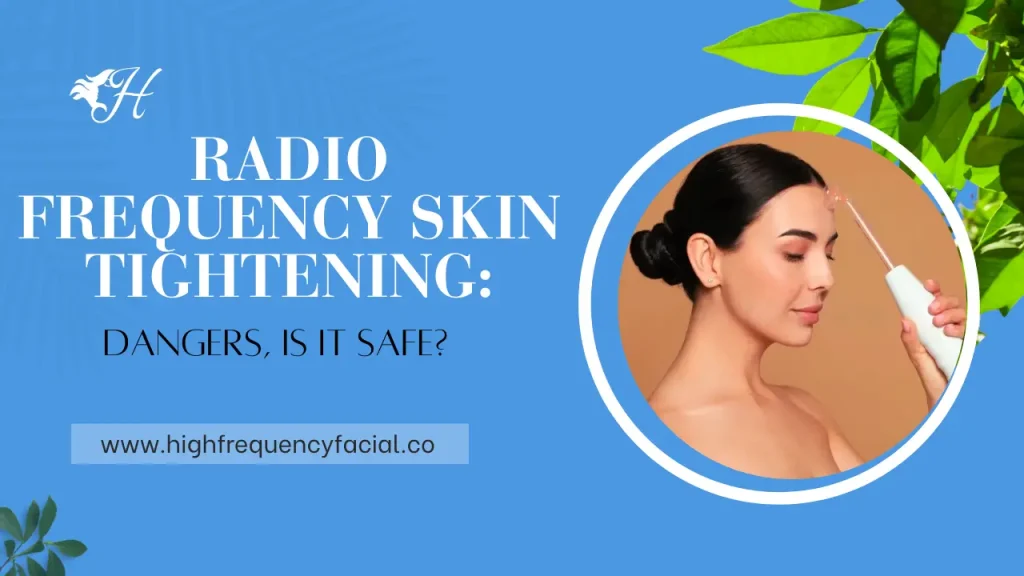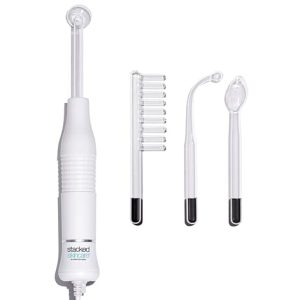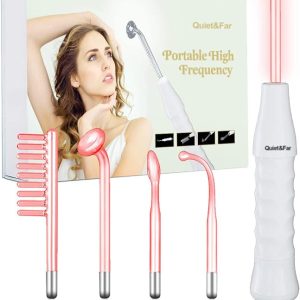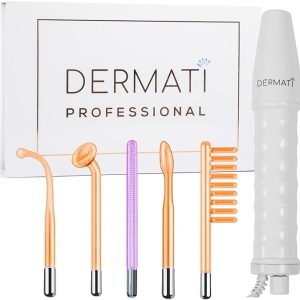Radiofrequency skin tightening is being used rapidly among skincare enthusiasts, but before including this into your routine, you should be aware of its dangers.
In this article, we’ll dive into the ins and outs of this cosmetic procedure.
We’ll discuss how it works, Its common side effects/dangers and why choosing a skilled professional matters. Stick around to discover the benefits and safety considerations of RF skin tightening. Let’s get started on the journey to a firmer and more radiant you!


What Is Radiofrequency Facial Treatment?
Radiofrequency facial treatment is a non-surgical way to tighten and rejuvenate your skin. It works by using radiofrequency waves to stimulate collagen production, the protein that keeps your skin firm and elastic.
The treatment uses a device that emits radiofrequency waves. These waves go through the skin and heat up the underlying tissues.
The heat encourages your skin to make more collagen and elastin, which are essential for firm and youthful-looking skin.
How Does Radiofrequency Tighten Skin?
Radiofrequency tightens skin by stimulating collagen production. During the procedure, controlled radiofrequency energy is applied to the skin’s deeper layers. This energy heats the tissues, prompting collagen fibers to contract and remodel. The result is firmer, tighter skin.
It’s like a gentle “wake-up call” for your skin’s natural collagen production, without harming the outer layers. This non-invasive approach is effective for achieving a more youthful appearance.
Also, check this guide: Does RF treatment reduce or melt fat?
Dangers of Radiofrequency Skin Tightening:
Here is a list of dangers associated with radiofrequency skin tightening:
| Dangers | How They Can Occur | Rarity |
|---|---|---|
| Burns and Discomfort | Incorrect settings on the radiofrequency device, prolonged exposure, or improper technique during application | Rare, but possible with improper use |
| Swelling and Redness | Normal inflammatory response to the treatment, especially in sensitive skin | Common, usually temporary |
| Bruising | Trauma to blood vessels during the procedure, particularly in individuals with thin or delicate skin | Common, especially in sensitive skin |
| Skin Sensitivity and Numbness | Overly aggressive treatment or individual sensitivity to the radiofrequency energy | Common, usually temporary |
| Risk of Infection | Poor hygiene practices during or after the procedure, leading to bacterial entry | Rare, if proper aftercare is followed |
| Uneven Results | Inconsistent application of the radiofrequency energy, influenced by the skill and experience of the provider | Common, depends on skill of provider |
| Not Suitable for Everyone | Pre-existing health conditions, such as autoimmune disorders, or skin infections | Common, certain conditions excluded |
| Cost Consideration | The need for multiple sessions, contributing to the overall expense | Common, can be expensive |
| Temporary Nature of Results | Natural aging processes and external factors may diminish the initial effects over time | Common, maintenance sessions may be needed |
Does Rf Damage Cells?
RF skin tightening, when done correctly by trained professionals, does not damage cells. The procedure aims to boost collagen production for firmer skin without harming surface layers. The heat used could theoretically damage cells if not controlled.
Yet, with proper equipment and settings, this risk is minimal. Common side effects include temporary redness or swelling, but severe cell damage is rare when the procedure is administered correctly.
Choose a qualified professional, follow care instructions, and consult with experts to ensure the procedure is suitable for your skin type and health.
Is Radio Frequency Skin Tightening Safe?
Generally, yes, radiofrequency (RF) skin tightening is considered safe when performed by trained professionals using appropriate equipment.
The RF energy used is non-ionizing and doesn’t pose significant risks when applied correctly. Common side effects may include temporary redness or swelling, but severe complications are rare when qualified practitioners administer the procedure. It’s crucial to choose a reputable professional and follow post-treatment care instructions.
Always consult with your healthcare provider to ensure the procedure is suitable for your individual skin type and health.


Is It Safe to Do Rf Everyday?
It’s not recommended to do RF (Radiofrequency) treatments every day.
While RF is generally considered safe, daily sessions may expose your skin to excessive heat, leading to irritation or other undesired effects. Your skin needs time to recover and regenerate.
Typically, RF treatments are spaced out with several weeks between sessions to ensure safety and effectiveness. Always consult with a qualified professional for personalized advice based on your skin type and specific needs.
Does Radio Frequency Skin Tightening Cause Cancer?
No, radiofrequency (RF) skin tightening does not cause cancer. The energy used in RF treatments is non-ionizing, meaning it doesn’t have the harmful effects associated with ionizing radiation, which is linked to cancer.
While radiofrequency radiation is not thought to cause cancer by damaging DNA in cells like ionizing radiation, there has been concern that it might increase the risk of cancer. However, there is no conclusive evidence that RF exposure increases cancer risk in humans, even in people regularly exposed to higher amounts of radiation.
When performed by qualified professionals, RF skin tightening is considered a safe cosmetic procedure without a known risk of causing cancer. Always consult with your healthcare provider for personalized advice based on your health and individual circumstances.
Safety Considerations:
Here are some things to consider when you have done or are willing to do rf skin tightening facial:
- Professional Choice: Opt for a skilled and experienced practitioner to minimize risks and ensure proper handling of the RF device.
- Device Accuracy: Confirm that the RF device is accurately calibrated for your skin type, reducing the likelihood of discomfort or burns.
- Skin Evaluation: Prioritize a thorough skin assessment before the procedure to identify any factors that might affect its safety.
- Follow Guidelines: Adhere to post-treatment care instructions diligently, including sun protection and skincare routines.
- Expect Common Side Effects: Be aware of temporary side effects like redness and swelling, which are typically short-lived.
- Respect Treatment Intervals: Stick to recommended treatment intervals to avoid potential complications from overdoing sessions.
- Health Consultation: Consult with your healthcare provider before the procedure, especially if you have pre-existing medical conditions or are pregnant.
Following these safety considerations ensures a secure and successful RF skin tightening experience.
Conclusion:
In summary, radiofrequency (RF) skin tightening is a safe and effective cosmetic procedure when performed by experienced professionals. The non-ionizing RF energy minimizes risks, with temporary side effects like redness or swelling being common but mild.
Choosing a qualified practitioner and following post-treatment care guidelines are essential for optimal results and safety. Consulting with a healthcare provider ensures the procedure’s suitability for individual skin types and health conditions.
In essence, RF skin tightening is a trusted option for non-invasive cosmetic enhancement.





